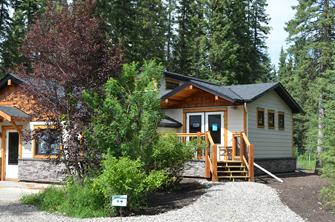One of my favourite sightings in Autumn is that of the male ungulates with their delightfully polished antlers protruding from their heads. Whether deer, elk, or moose, all of them have managed to do an amazing feat, which is to regrow two new bones in less than a year. I have never managed to regrow any of my bones, so the miracle of this rapid regeneration never gets old.
Unlike horns, which have a bone core with a keratin covering that grows constantly, male ungulates are starting from scratch every year. They have two round pedicles on their head from which their antlers will “spring,” growing from the tip outwards. The bone antlers are covered in a blood rich velvet that feeds the growth which can be 2 cm a day in deer or 2.7 cm a day in
elk. To put that into perspective the bucks (male deer) and bulls (male elk or moose) that you are admiring at this time of year have grown those antlers in three to five months, depending on the age. Antlers are the fastest growing bone in mammals. For an elk with antlers averaging between twenty to thirty pounds they would need to consume around sixteen pounds of food to keep the levels of calcium and phosphorous nutrients up. If they cannot, their antlers will not grow to be as impressive.
They say size doesn’t matter, but female ungulates are not convinced. One of the main purposes of the antlers is to impress the females. It helps them choose the males that are best at finding good nutrition and have the energy and strength to wander around with that much weight on their heads, which in turn means they will pass on those successful genes to their offspring. When the antlers are done growing the blood flow to the velvet is cut off and it quickly dries and falls off. This enables the bucks and bulls to polish the antlers on trees to make them really stand out.
There is a notion that antlers are also designed for fighting. While it is true that males can and do spar to gain access to females, fighting is not a great idea right before winter when food supplies decrease and more energy is required to travel over cold snow-covered terrain; any fight injury could be a death sentence. Males use the antlers to prevent fights by judging the other males’ strength against their own. It is only if the antlers are close in size that a fight will occur. This keeps all the young males from being mortally wounded by the more powerful suitors.
Antlers also help ward off the predators in the winter. The longer they keep the antlers attached in the winter the less likely they are to be eaten by predators. However, the new antlers can’t start growing until the old antlers are shed. A difficult “point” to ponder, start growing antlers sooner to impress the females for the rut, or keep your antlers a little while longer to prevent being someone’s lunch.
Photo by Jackie Sills




























